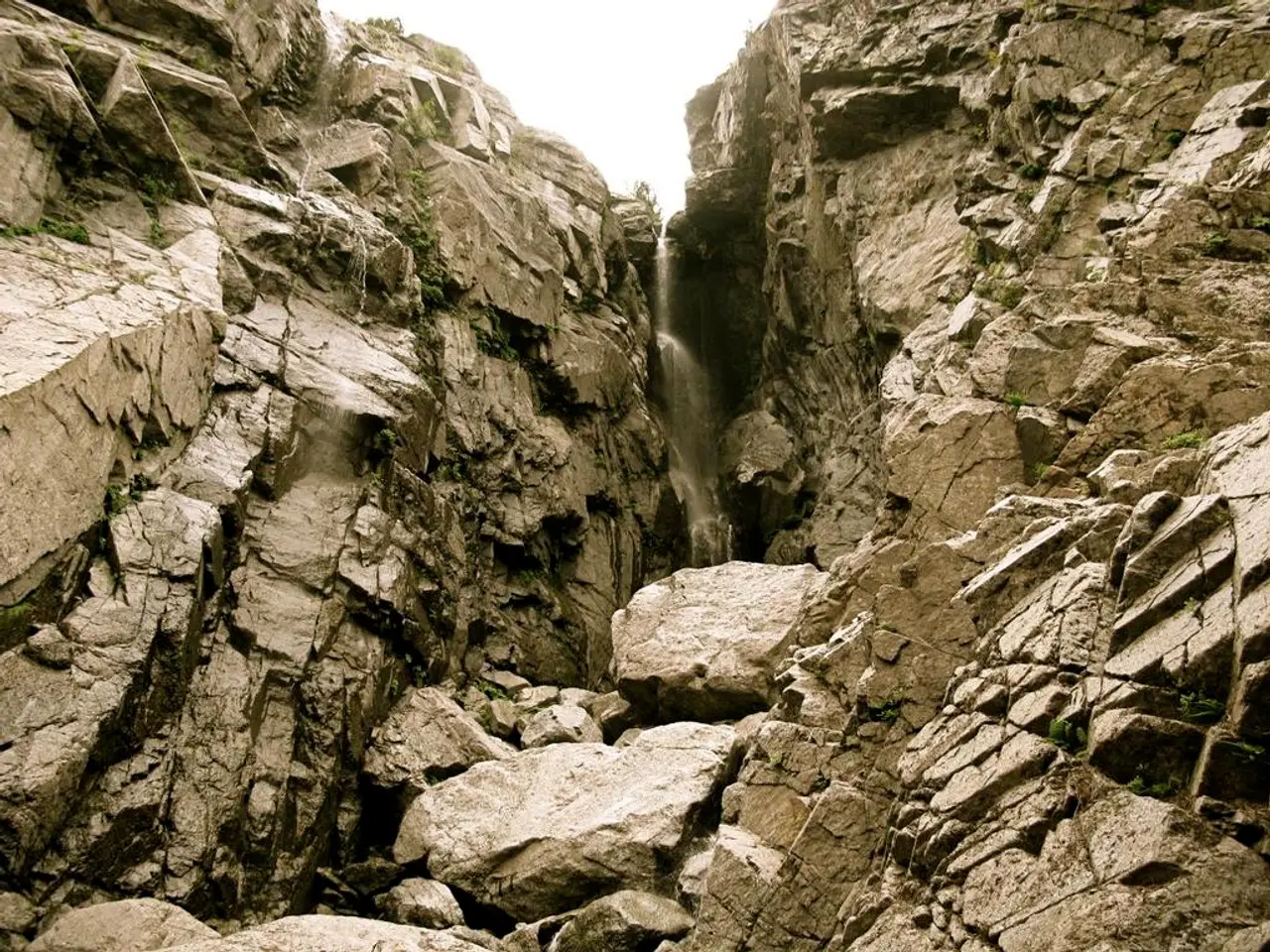Catastrophic monsoon rains result in the death of 377 individuals in Pakistan's northwestern region, with the Prime Minister touring the most affected Buner district.
Pakistan Braces for More Floods as Death Toll Rises
As the monsoon season continues, Pakistan is grappling with the aftermath of heavy rains and floods that have claimed at least 707 lives since June 26. The hardest-hit region is Khyber Pakhtunkhwa, where 427 deaths have been recorded, with 377 of them in the province since the start of the monsoon season.
Prime Minister Shehbaz Sharif recently conducted an aerial inspection of flood conditions and damage in Buner and Shangla, a district in Khyber Pakhtunkhwa that has seen 228 deaths since last Friday. The Prime Minister is also expected to meet flood victims in Buner and distribute relief checks among them.
The Provincial Disaster Management Authority (PDMA) in Khyber Pakhtunkhwa reported that 1,377 houses have been damaged, including 355 completely destroyed, with the highest losses reported in Buner.
The situation in other parts of the country is also cause for concern. Urban flooding is possible in Karachi, Hyderabad, Sukkur, and Mirpurkhas due to poor drainage, while flash floods are possible in Thatta, Badin, Jamshoro, and Dadu. The Pakistan Meteorological Department (PMD) has issued warnings about extreme rainfall in these areas in the next 12 to 24 hours.
The Indus River is experiencing medium-level flooding at Chashma and Taunsa barrages, and low-level flooding at Tarbela, Kalabagh, and Sukkur. The Tarbela Dam is 99 percent full, and Mangla Dam is 74 percent, urging citizens to take precautions and cooperate with authorities in case of emergency evacuation.
The PMD has also warned of a further rise in water levels from August 24 due to "severe thunderstorms in the upper parts of rivers." The National Disaster Management Authority (NDMA) has forecast more than 100 mm of rain in a short span of time in these regions.
Residents are advised to move valuables and livestock to safer ground and prepare emergency supplies. Rising water levels in the Indus River and its tributaries could inundate low-lying areas, potentially disrupting transport, electricity, and telecommunications.
The monsoon rains are crucial for agriculture, food security, and the livelihoods of millions of farmers in Pakistan. However, the country is among the world's most climate-vulnerable nations, and the current floods serve as a stark reminder of this vulnerability.
The PDMA Punjab has instructed all commissioners, deputy commissioners, and relevant departments to remain on alert, ensure advance preparations, and deploy rescue teams at sensitive locations. The PDMA Punjab has also warned of a rise in water levels due to melting glaciers and monsoon rains.
The Prime Minister's office stated that he conducted an aerial inspection of flood conditions and damage in Buner and Shangla, and the PDMA instructed local administrations to accelerate relief efforts and its emergency operations center is fully active.
As the flood situation continues to evolve, the government and aid organisations are working tirelessly to provide relief and support to those affected. The people of Pakistan are urged to stay informed, stay safe, and cooperate with authorities during this challenging time.
Read also:
- Understanding Hemorrhagic Gastroenteritis: Key Facts
- Stopping Osteoporosis Treatment: Timeline Considerations
- Tobacco industry's suggested changes on a legislative modification are disregarded by health journalists
- Expanded Community Health Involvement by CK Birla Hospitals, Jaipur, Maintained Through Consistent Outreach Programs Across Rajasthan








